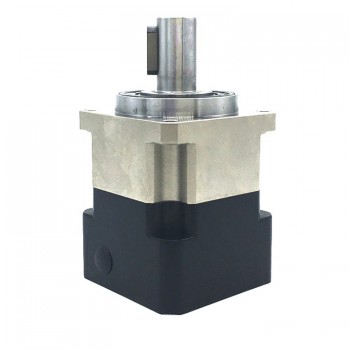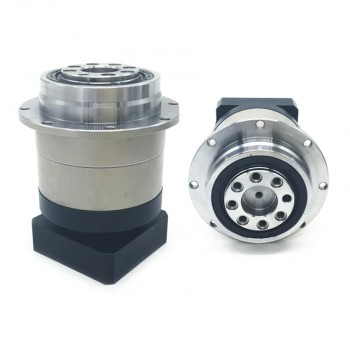1.What is a helical planetary gearbox?
A helical planetary gearbox is a type of gearbox that combines a helical gear set with a planetary gear system to achieve a compact design with high torque and smooth, quiet operation. It uses angled helical gears in its initial stage, which are more efficient and quieter than spur gears, and then feeds the output into a planetary stage for further torque multiplication. This combination is beneficial for high-power, high-torque applications like those in the sugar industry, and for precision applications requiring smooth motion.

2.Working principle
1.Helical gear stage: Power enters the gearbox through a helical pinion gear. The angled teeth of this gear mesh with another helical gear, creating a smooth, quiet transfer of motion and torque.
2.Torque and speed reduction: The helical stage reduces speed and increases torque. This output is then fed into the planetary gear set.
3.Planetary gear stage:The sun gear, located in the center, receives the input from the helical stage.The sun gear rotates the planet gears, which are held in a carrier and orbit around the sun gear.These planet gears simultaneously mesh with the internal teeth of a stationary or rotating ring gear.
4.Torque multiplication: The simultaneous contact and rotation of the planet gears against the sun and ring gears allows for a high degree of torque multiplication and speed reduction.
5.Output: The planet carrier provides the final output, which is a result of the combined rotational velocities.
3.Functions of helical planetary gearbox
1.Speed reduction and torque increase:Helical planetary gearboxes are primarily used as speed reducers to slow down the motor’s input speed.This speed reduction is directly coupled with a significant increase in output torque (rotational force).
2.High load capacity:The planetary design allows the load to be shared across multiple planet gears, resulting in less stress on each tooth and higher overall load-carrying capacity.The helical teeth further improve load capacity because more teeth share the load at any given time compared to other gear types.
3.Compactness and high torque-to-weight ratio:Planetary systems are known for their ability to handle large amounts of torque in a very small, compact form factor.This makes them ideal for applications where space is limited, such as in robotics, vehicles, and other machinery.
4.Smooth and quiet operation:The angled, helical teeth engage gradually, unlike spur gears which engage all at once, leading to a smoother and quieter operation with less vibration.The load-sharing in the planetary system also contributes to reduced noise and smoother performance.
5.High precision and low backlash:The combination of helical and planetary gears provides a precise and stable transmission.The gradual engagement of helical teeth helps to minimize backlash (play or looseness) in the system.

4.Precautions of using helical planetary gearbox
1.Ensure proper alignment:Correct alignment between the gearbox input shaft and the motor is crucial. Misalignment can cause excessive noise, vibration, and premature wear on bearings and gears.
2.Avoid forceful installation:When mounting transmission elements like pulleys or couplings, never use a hammer to force components onto the shaft. Impact can damage the output bearings and other internal components. Always use gentle force and appropriate tools.
3.Manage axial forces:Helical gears produce axial thrust during operation. Ensure that your application’s bearings are designed to handle these thrust loads. A reinforced gearbox may be necessary for applications with large radial or axial loads.
4.Clean contact surfaces:Before assembly, thoroughly clean the motor input shaft, centering boss, and gearbox connection surface. This prevents rust or debris from compromising the connection’s tightness and concentricity.
5.Securely mount the unit:The gearbox must be securely mounted to a rigid, horizontal foundation. Unreliable mounting can lead to vibration, which causes premature bearing and gear damage.
6.Install safety guards:For exposed rotating parts, such as shafts and couplings, install safety guards to prevent accidental contact.
7.Monitor for overheating:Helical planetary gears are compact, limiting their ability to dissipate heat. Monitor the gearbox’s temperature with an infrared gun, especially during peak operation. Discoloration on the housing is a sign of overheating.
8.Control the environment:Minimize environmental vibration, and avoid operating in areas with corrosive gasses, excessive humidity, or high levels of dust and debris. Contaminants can cause damage and reduce the gearbox’s lifespan.
9.Conduct a trial run:After installation, perform a trial run of at least two hours. Start with a no-load test, gradually increasing the load. During the test, check for smooth operation, unusual noise, vibration, or leaks.